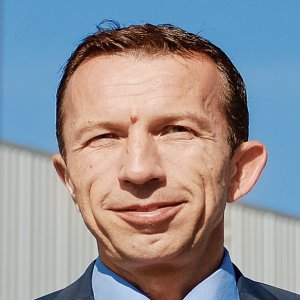Scrapping the Past to Drive the Future

Q: How has the exchange rate affected the heavy vehicle market in Mexico?
A: Most heavy duty vehicles are priced in dollars, which has impacted each company differently depending on the commercial strategy that each enterprise employs. The situation has become an issue for the entire market. Through the scrappage scheme, associations like ANPACT expect a minimum incentive of MX$250,000 (US$14,700) per vehicle. In January 2015, this represented a little over US$18,000 at the exchange rate of MX$13.5 for every dollar, but the figure has dropped to just over US$13,000 without the government adjusting the exchange rate.
Trucks and buses are valued in dollars as well as most components. Therefore, the peso’s instability does not benefit anybody within the segment. The current conditions cause planning instability for transport companies and the industry as a whole. If the country manages to stabilize the exchange rate, transport companies will be able to plan and respond much better to market fluctuations.
Q: What are the expectations for the development of the heavy duty industry in 2016?
A: Compared to ANPACT’s most profitable years in 2007 and 2008, we saw sales decrease by 30-35 percent in 2015. Although sales have dropped for two years in a row, the tide is finally turning, although no major improvements will be seen before the end of 2016. However, key players in the industry believe that sales will grow very little. This will only change if an external entity boosted the industry. This could be either better governmental financing or an enhanced scrappage scheme.
Q: How has the scrappage scheme evolved since 2015?
A: The scrappage scheme has already destroyed an estimated 40,000 vehicles, proving that the interest in renewing the vehicle park is there. The plan changed in 2016 and we will see the “chain program” come into force. This program allows financially healthy companies to renew their fleet by selling their used vehicles and purchase brand new trucks. In return, smaller companies can purge their aging vehicles and purchase a used unit made available usually by larger enterprises. As a result, each company can renew their fleet at a different rate based on their economic possibilities, ultimately energizing the secondary market of heavy duty vehicles. While smaller companies purchase these used vehicles at a more competitive rate, larger companies receive governmental incentives for passing these older vehicles on to be used by companies with limited spending power.
We have yet to complete a behavioral analysis as the chain program began in December 2015 but we are optimistic. The Ministry of Finance held a meeting in February 2016 in which the committee discussed different ways to enhance the chain program. For now, this plan will only cover trucks registered by the federal government, assuming the program is established at a federal level. There is still a proposal to not only consider federal license plates but all state license plates with a federal permit and to improve other areas of the plan that could promote the scrapping of more vehicles.
Q: What other factors should the industry evaluate to find ways to boost the renovation of the heavy vehicle park?
A: We must closely monitor used vehicle regulations while working toward our environmental goals. Otherwise, more used vehicles could be imported from the US since those units do not have to comply with the NOM-044 regulation that is applied to new vehicles. To reduce emissions in Mexico, we must extend our focus beyond the 42,000 new vehicles sold between January and July of 2016 to the more than a million used vehicles with obsolete technology being driven every day throughout the country





















